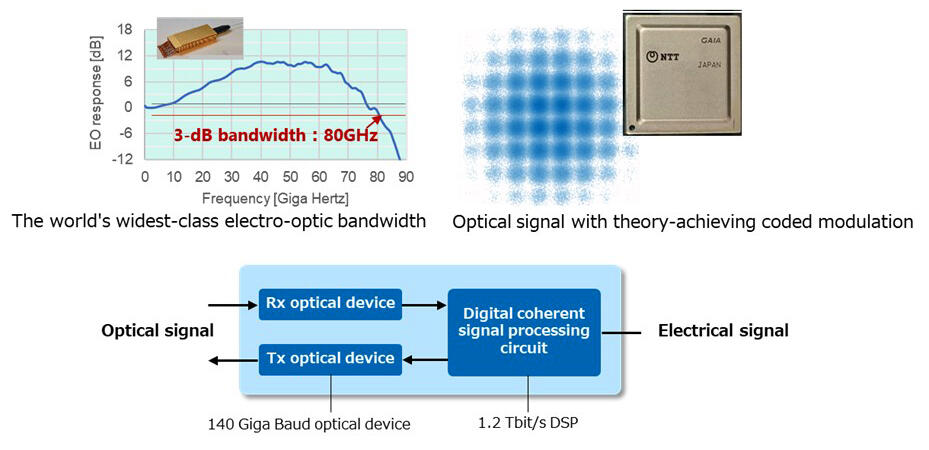On September 5, NTT announced it had developed a digital coherent signal processing circuit and optical device enabling optical transmission at the highest capacity ever of 1.2 Tbps (terabits per second) per wavelength. The device is expected to increase transmission capacity by 12 times and reduce power consumption to 10% of the 100 Gbps (gigabits per second) per channel commercial optical transmission systems currently in wide use. As a result, it is attracting attention for its potential to increase the capacity of optical networks and achieve longer distances, all while conserving power.

Provided by NTT
The spread of new information and communication services such as video and cloud technologies and 5G services and the rapid increase in remote work means that network traffic is increasing and is expected to increase further in the future. To address this situation, backbone optical communication networks must reduce power consumption and costs required for transmission per bit at a rate of approximately one-tenth over the next ten or so years.
However, it has been difficult to significantly reduce power consumption in conventional transmission devices while expanding capacity. In response to this need, NTT has been developing world-class optical transmission and optical device technologies that can significantly and economically expand the capacity of existing optical transmission systems.
Through the developed device, NTT has increased the modulation rate of optical signals to 140 giga bauds, the fastest in the world, and achieved optical transmission of 1.2 Tbps per wavelength, 1.5 times faster than the previous record of 800 Gbps (achieved by other companies), which had been achieved in Japan and overseas. The technology also allows a doubling of the optical transmission distance at 800 Gbps.
The system uses a digital coherent optical transmission system. In the system, all polarization, amplitude, and phases of light are captured as digital data, and signal distortions that occur in optical fiber transmission channels and optoelectronic devices are compensated for using advanced signal processing. The system's core, an optical signal transmitter/receiver with a maximum transmission capacity of 1.2 Tbps, consists of a combination of the world's highest level digital coherent signal processing circuit--the technology developed by NTT--and a 140 gigabaud ultra-class optical device that enables the world's largest optical-to-electric response bandwidth.
This article has been translated by JST with permission from The Science News Ltd.(https://sci-news.co.jp/). Unauthorized reproduction of the article and photographs is prohibited.




